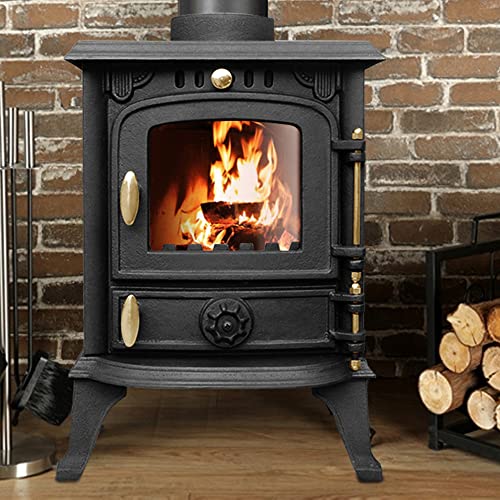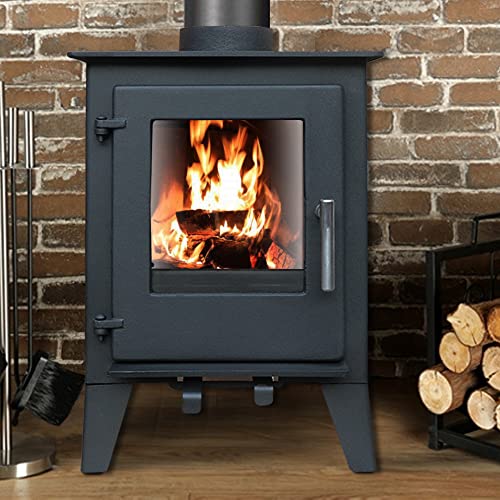Defra Wood Burning Stoves UK Tips That Will Revolutionize Your Life
페이지 정보

본문
 Defra Wood Burning Stoves
Defra Wood Burning StovesStoves are greener than open fires, and can heat rooms more efficiently. They are less polluting because the majority of the smoke goes up the chimney instead of directly into the room.
However, you could be unable to use a wood burning stove if you live in a smoke control area. To avoid this, you should select an approved DEFRA approved contemporary stoves-certified stove.
Clean Combustion
A Defra wood-burning stove is a top-quality appliance that offers an environmentally responsible and clean method of heating your home. These stoves are made to burn authorised fuels like wood and smokeless coke, without releasing unneeded emissions. Modern combustion technologies reduce the amount of combustible gas that is produced during the combustion process.
They can be used in Smoke Control Areas (SCAs) in the UK thanks to this technology. These areas are typically populated with cities and towns in which the emission of particulate matter is limited.
They are also extremely efficient, which means you will require less wood to provide the same level of heating. They can help you reduce the cost of energy.
In addition to the environmental advantages, these stoves are extremely safe to use. They are constructed with strong, sturdy components that ensure they can withstand intense heat and large loads of logs. This will ensure that your fireplace burning wood is always reliable and safe to use.
Defra approved stoves are typically described as ecodesign ready or 'Smoke Exempt'. They can be installed in Smoke Control Areas of the UK. They have passed a rigorous test that ensures they meet the strict standards for emissions. This means they have the ability to legally burn wood and other approved fuels in these areas. This is done by supplying the minimum amount of combustion air required and resulting in virtually no smoke.
Many people are misinformed about the emissions generated by stoves and open fires. They might think that wood-burning stoves contribute a lot to fine particulate matter in the UK. The truth is, domestic combustion only accounts for 13% of the total. Incinerators and bonfires are a bigger source.
Sadiq Khan is believed to be planning a ban in London on the use of traditional open fires as well as older stoves. If this plan were to be implemented the city would be an entirely smoke-free zone. This proposal, although unlikely to be successful, emphasizes the need for governments to take steps to minimise particulate emission in urban areas.
Reduced Emissions
In the UK wood-burning stoves are popular for home heating. However, they can also produce significant amounts of harmful air pollutants, including particulates and volatile organic compounds (VOCs). These emissions may lead to health problems such as lung cancer and heart conditions. Modern log burners with defra approval make use of advanced combustion technology to reduce the emissions. They also have secondary and tertiary combustion system that significantly reduces primary PM secondary PM precursors, NOx and toxicity and are designed to ensure complete combustion in order to attain this.
These stoves are more environmentally friendly than open fires and are a popular choice in areas with smoke control zones or restrictions on wood burning. These are usually populated cities and towns where excessive smoke can cause an issue for residents. People who decide to use an open flame in these areas are at risk of being fined from the local authority, but homeowners who choose to install a defra approved stove or wood burner are able to avoid these penalties.
The DEFRA approved low emission stoves exempt range of stoves from brands like Arada, Parkray, Burley and Stovax are equipped with the latest green technology, which reduces harmful emissions to almost zero in stable combustion conditions. These Defra stoves are also SIA Ecodesign ready, which means they comply with increased efficiency goals for energy as well as strict emission limits for particulates and VOCs.
It is important to note that DEFRA stoves disadvantages stoves can only be used in smoke control areas if they are specifically designed for this purpose and if you can prove that you reside in one. If you live in a zone of smoke control and want to use a stove that does not meet the requirements, you might need to purchase an adaptor or retrofit it with a chimney cowl.
It is crucial to keep in mind that defra stoves are not immune to the same wear and tear that occurs to other wood burning appliances, so it is crucial to perform regular maintenance to ensure they are in good condition. This includes cleaning regularly the chimney and flue and checking for blockages. Maintaining your stove will ensure that it will work efficiently and last for a long time.
Energy Efficiency
Our approved DEFRA stoves specifications stoves (click through the following website page) utilize the latest combustion technologies to provide the highest heat output while reducing emissions. Many of these stoves also feature pre-heated secondary and tertiary air to further reduce particulate matter (PM) emissions. PM is produced when wood and other solid fuels burn and can cause a range of health problems including respiratory issues. The good news is that SIA Ecodesign-ready stoves (often referred as DEFRA stoves comparison-exempt stoves) can cut down on the amount of PM by 55% compared to open fireplaces and standard stoves.
Stoves aren't just appealing for their aesthetics; they can be an energy saver and can help keep your home warm. They can warm rooms faster than standard radiators, and cut heating expenses by up to 40%.
Defra approved appliances are especially useful for those who live in a smoke-free zone which includes the majority of UK cities and towns. In these areas it is illegal to use a non-approved multi-fuel stove or log burner unless you have DEFRA approval or have a stainless-steel twin wall chimney liner that complies with the regulations for smoke control.
DEFRA approved stoves are often identified as "DEFRA Exempt" or "SE". They have passed a government-approved test to confirm that they can be legally used to burn fossil fuels in homes without producing smoke. The tests confirm that these stoves emit low levels of pollution and ensure that the stove has enough combustion air to prevent smoke escaping from the flue.
The burning of wood or other solid fuels can be affected by a variety of factors. For instance, the use of unseasoned, wet wood, which can cause more smoke than kiln dried wood closing your top air vent too tight which can hinder combustion or starving the stove of oxygen overnight, which can cause smoke. The best solution is to use only dry, seasoned and properly size firewood, and ensure that you have a well-functioning and clean flue system with a tight seal.
Aesthetics
A wood stove is a popular option for many homes. It offers a number of benefits, including cost savings, clean combustion, reduced emissions and the potential for renewable energy. They are also an attractive feature in a room and can add to the look of a home.
Wood stoves are not all made in the same way. A new study has revealed that certain wood stoves, even those marketed to be environmentally friendly, emit 750 times as much tiny particles of pollution than a modern HGV. This is a significant amount of pollution and could cause your home to be dangerous for your family and you.
The good news is that a lot of these older stoves can be altered to be much more eco-friendly by ensuring the wood used is properly and seasoned or kiln-dried. This will reduce the moisture content and greatly improve the efficiency of the stove, as well as reducing the emissions levels. This is particularly crucial if you live in a smoke-control area where only stoves that are approved are permitted.
You can determine whether your wood-burning stove is Defra approved by looking for the logo on the front of the stove or the specifications. It's usually "Defra Approved" or, more correctly the clearSkies rating of 3, 4, or five. If you reside in a smoke-control zone you must make sure that your wood burner has Defra approval to continue to burn wood legally.
DEFRA approved stoves have been tested to make sure that they meet the high standards required for their sale So you can be sure that the stoves made of wood you purchase are safe. Before installing a wood burning stove you should talk to a professional installer who can offer guidance on the most suitable solution for your house.
If you're looking to become more environmentally friendly, you may think about a multifuel stove instead of a wood burning one. They can use other kinds of fuel, such as gas and coal and wood, and will reduce heating expenses. They are also available in a range of styles, so you can choose the best design for your home.

- 이전글What Is The Reason? Coffee Beans Coffee Is Fast Becoming The Most Popular Trend For 2023 24.09.02
- 다음글Are You In Search Of Inspiration? Check Out Wall Mounted Bio Ethanol Fireplace 24.09.02
댓글목록
등록된 댓글이 없습니다.


